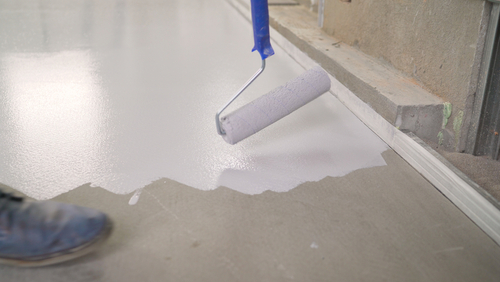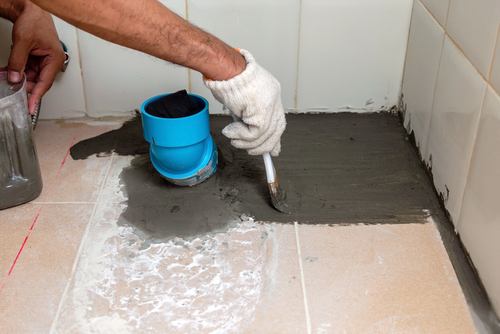
Why Is Waterproofing So Important?
April 25, 2022
How Long Can Waterproofing Last Without Leakage?
August 15, 2022Can You Waterproof Over Old Waterproofing?

Can You Waterproof Over Old Waterproofing? What is Waterproof? Waterproof is a term used to describe an object or material impervious to water. The object or material will not allow water to pass through it. Waterproofing is the process of making an object or material waterproof.
Table of Contents
Types of waterproofing materials and methods:

1. Waterproof paints
This is one of the most common waterproofing methods. Waterproof paints work by creating a barrier on the surface of the object or material that water cannot penetrate.
2. Membranes
Membranes are thin sheets of material applied to an object’s surface or material. They work by creating a barrier that water cannot penetrate.
3. Coatings
Coatings are applied to the surface of an object or material. They work by creating a barrier that water cannot penetrate.
4. Sealants
Sealants are applied to the joints or seams of an object or material. They work by filling in the spaces where water can enter and creating a barrier that water cannot penetrate.
5. Flashings
Flashings are used to seal the joints between two objects or materials. They work by creating a barrier that water cannot penetrate.
6. Gaskets
Gaskets are used to seal the joints between two objects or materials. They work by creating a barrier that water cannot penetrate.
Those are some common waterproofing materials and methods.
Is Waterproofing Compulsory For Every home in Singapore?

As our Singapore homes are in a tropical climate, we will inevitably experience heavy rains and thunderstorms throughout the year. While most of us are lucky enough to have roofs over our heads that protect us from the rain, many parts of our homes are exposed to the elements and susceptible to water damage.
Water damage can occur in many different ways. It can be caused by a faulty roof that leaks during a heavy downpour or by windows and doors that are not adequately sealed and allow water to enter our homes. Water damage can also be caused by plumbing problems, such as leaks in pipes or drains that allow water to seep into our homes.
To protect our homes from water damage, it is essential to waterproof them. Waterproofing our homes will create a barrier preventing water from entering and causing damage.
There are many different ways to waterproof our homes. We can paint the exterior of our homes with waterproof paint, or we can apply membranes or coatings to the surface of our homes. We can also seal the joints and seams of our homes with sealants, or we can install flashings and gaskets to fill the gaps between two objects or materials.
Waterproofing our homes is not a mandatory requirement in Singapore, but it is something that we should consider doing to protect our homes from water damage.
When Do I Need To Waterproof?

If your home is more than ten years old, it’s a good idea to check the condition of your waterproofing. Even if your home is new, if there have been any recent changes or additions to the drainage system (for example, an extension or new driveway), it’s worth checking that the existing waterproofing is still effective.
There are a few tell-tale signs you might need to waterproof your home. The following are potential signs that waterproofing may be required:
1. Water seeps into your home from the outside.
Do you notice any outside water seeping into your home when it rains? This could be a sign that your waterproofing is no longer effective.
2. Damp or mold on internal walls.
Do you notice any dampness or mold on your internal walls? This could be a result of water seeping in from the outside.
3. Cracks in external walls.
Do you see any cracks in your external walls? If so, this could signify that water is starting to seep in.
4. Efflorescence on external walls.
Efflorescence is a powdery white substance that can sometimes be seen on brickwork or concrete. It’s caused by water seeping through the wall and dissolving minerals in the mortar or concrete.
5. Rust on metal fixtures.
Do you see any rust on metal fixtures, such as downpipes or guttering? This could be a sign that water is starting to seep in.
If you notice any of these signs, it’s a good idea to get your home checked by a professional. They will be able to tell you whether you need to waterproof your home and, if so, what needs to be done.
When Do I Need to Reapply Waterproof?

How often you reapply waterproofing depends on the product and its application. Some products may only require one coat, while others may require two or three coats. The best way to know is to follow the manufacturer’s instructions. It would help if you also regularly inspect your waterproofing to ensure it is still intact and effective. It is time to reapply if you see cracks, peeling, or other signs of wear.
Waterproofing can last anywhere from a few months to a few years. The length of time will depend on the product, its application, and the conditions it is exposed to. For example, waterproofing in an area that gets a lot of sun and heavy rains will not last as long as in an area that is more protected from the elements.
If you are not sure if your waterproofing needs to be reapplied, it is always better to err on the side of caution and do it sooner rather than later. This will help ensure your home or business stays dry and protected from water damage.
Can I Waterproof Over Old Waterproofing?

If your old waterproofing is in good condition and you don’t have any leaks, you can apply a new coat of waterproofing over the old one. This will help extend the life of your waterproofing and may even improve its performance. However, if your old waterproofing is cracked or peeling, it’s best to remove it before applying a new coat. Otherwise, you could end up with leaks.
Can You Waterproof Over Old Waterproofing? – Conclusion
Waterproofing is an essential part of protecting your home from water damage. If you think your home needs to be waterproofed, it’s a good idea to get it checked by a professional. They will be able to tell you whether you need to waterproof your home and, if so, what needs to be done.




